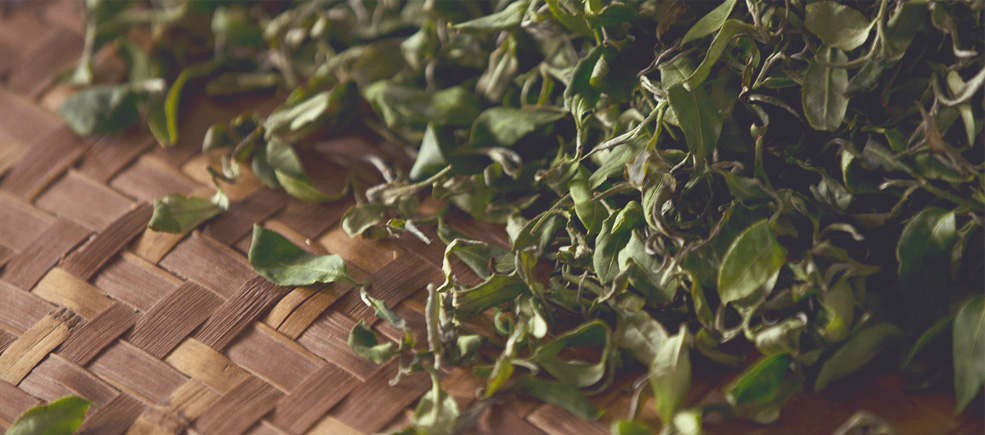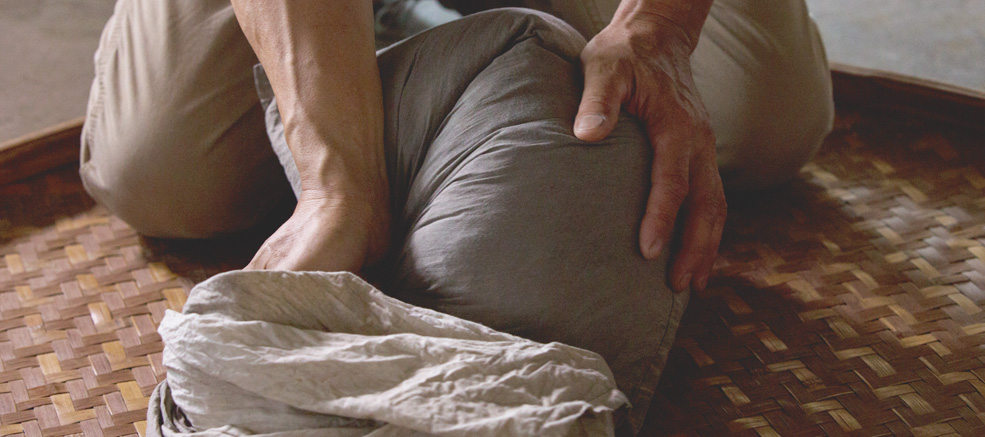TEA HARVESTING
Waiting for the right moment on a day with perfect weather, tea farmers will delicately harvest what is called “one-tip, two-leaves” from the tea trees. If harvested too early, there will be excess water retained in the leaf, making it harder to bake and will result in tea that is less fragrant. If harvested too late, the tea can dry up and lose flavor. Experienced tea cultivators understand that timing is everything when creating the best quality tea.
SUN WITHERING
After the tea leaves are collected, they are set out to dry under the sun. The sunlight will make the leaves soften by removing excess water. It acts as an all-natural drying machine, breaking down the leaves’ pores and reducing the bitterness of the caffeine, allowing the natural taste of the tea to gradually rise.

INDOOR WITHERING
The tea leaves are then moved indoors, to a climate-controlled environment that will allow the remaining excess water to evaporate. The oxidation of the tea leaf cells will begin the first step in a fermentation process that develops the tea’s signature taste and aroma.
TOSSING
To further enhance the fermentation process, tea cultivators use their skilled hands to mix and toss the tea leaves. The friction between the leaves causes the cells to open and air to enter. This carefully tended process produces tea that is more fragrant and flavorful.
BLANCHING
As the leaves gradually shed their natural grass essence, the next step is known as blanching. Using high temperature steam, the tea leaves are heated to deactivate enzyme activity and stop the fermentation process. This steadies the flavor, prevents undesired scents from permeating the leaves, and softens them so they can be more easily rolled into shape.

ROLLING
The blanched tea leaves are then gently rolled, causing them to curl around themselves. This rolling action causes essential oils and liquids to be released and coats the leaf’s surface with its own juices. This allows the natural tea flavor to quickly express itself once brewed.
DRYING
To make the tea leaves more compact and ready for prolonged storage, tea cultivators will spread out the leaves and remove all excess water with hot air. This baking process will stabilize the leaves and lock in the flavor… until it is released again when brewed with boiling hot water, finally ready to drink.